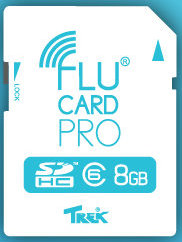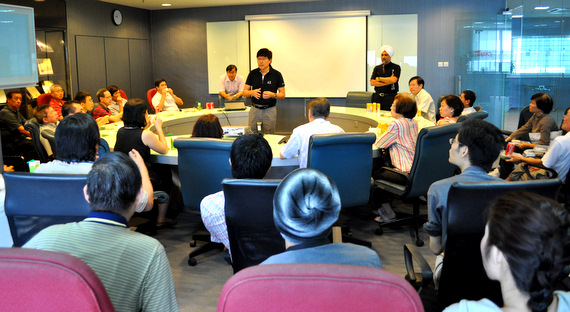
TREK 2000 reported a 49% decline in net profit to US$1.5 million for FY2011 due mainly to a one-time write-off of US$1.4 million in an unquoted investment.
This was a business dealing with wireless technology for application to taxis, which was liquidated in 4Q last year.
Adjusting for the write-off, Trek's profit would have been unchanged from the previous year. The stock, at 35 cents, trades at a not unlofty 29X PE.
Trek proposed a first and final dividend of 0.75 Singapore cents, down from 1 cent in the previous year.
For investors and analysts at Trek's results briefing last week, by far the more engaging topic was the long-anticipated profit boost from Trek’s two inventions of disruptive technology - the ThumbDrive and the FluCard.
Trek counts among just a small number of Singapore companies that have produced inventions that are mass-adopted globally.
Here are insights based on a discussion hosted by Trek CFO Gurcharan Singh, director of R&D Poo Teng Pin, and Dr Peter Pooh who joined Trek recently as President, Mobile Media Solutions/Security Solutions.

a. ThumbDrive licensing revenue: This will be the first full-year contribution in licensing revenue from Verbatim Corporation and Patriot Memory LLC.
In Oct 2011 and Jan 2012, Verbatim and Patriot, respectively, settled out of court the suits brought against them in the US last year by Trek, which sought to enforce its patents for ThumbDrive.
Mr Gurcharan declined to guesstimate a figure for the licensing revenue to come, saying it would depend on the USB flash drive sales of Verbatim and Patriot. He, however, said it would be significant.
An Oct 2011 DMG & Partners report estimated the licensing revenue attributable to Trek would be 2-3% of USB-flash drive sales of these two companies.
The DMG report estimated that Verbatim would contribute US$1 million a year to Trek's bottomline.
The out-of-court settlements did not come with penalties for infringing on the patents since Trek invented the ThumbDrive 12 years ago. It was disruptive technology that ended the era of floppy disks.
Trek has also brought suits against two other companies and settlements are likely this year.
Another two companies which Trek sued have decided not to continue manufacturing products that infringe on Trek’s ThumbDrive patents, so they will not be paying any licensing revenue to Trek.

b. FluCard sales: The FluCard is set to end the reign of the SD card (which is essentially a dumb storage card found in many digital devices such as digital cameras).
While possessing the storage capability of the SD card, the FluCard is Wi-Fi enabled to transmit files (such as photos) between two cameras equipped with the FluCard.
In fact, the FluCard has other features including enabling a camera to upload images to the Internet via Wi-Fi.
Given its capabilities, from US$2 million in 2011, the FluCard is projected by Trek to bring in US$8 million in sales this year from the Japanese market alone.
The FluCard has recently started entering the markets of China and India too, as well as Singapore (where it is sold for S$79.90 in Challenger stores).
The mass-adoption of the FluCard has become a certainty after two years of effort. Japanese camera makers are set to incorporate the FluCard in their new cameras, especially the mid- to high-end models.
The camera makers can either purchase FluCards produced by Trek’s contract manufacturer or they (and SD card manufacturers) can produce the FluCards themselves by paying licensing fees.
It’s not just the Japanese camera makers but also their arch rival from South Korea, Samsung, who are working with Trek to FluCard-enable their products.
The FluCard is likely to prove that Trek has once again invented something that will make waves in the consumer market globally.
“Our goal is to have our disruptive technology kill the SD card in three years. By then, the price of the FluCard will only be at a 25% premium to the SD card,” said Mr Gurcharan.
Trek’s financial statements for FY2011 can be accessed at the SGX website.
 30 NextInsight readers visited Trek more than a year ago. Sharing interesting insights into Trek's business prospects and its latest products was chairman and CEO Henn Tan (standing). NextInsight file photo
30 NextInsight readers visited Trek more than a year ago. Sharing interesting insights into Trek's business prospects and its latest products was chairman and CEO Henn Tan (standing). NextInsight file photo
For more on the FluCard, read our previous stories:
TREK 2000: FluCard, Ai-Ball and apps set for takeoff
TREK 2000: Power presentation for NextInsight readers







